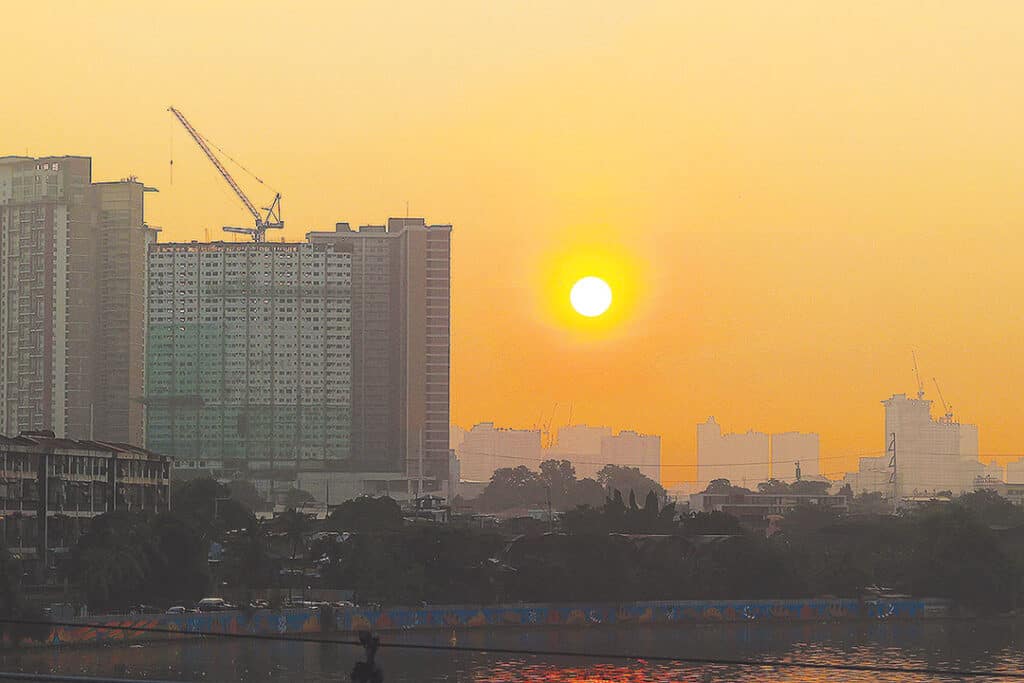
URBAN PLANNING in the Philippines must prioritize climate and geographical realities for holistic development, according to an expert.
“Our political constructs of provinces and regions don’t fit with the natural constructs of the ridges of mountains, watersheds, and river systems,” Paulo G. Alcazaren, urban planner and landscape architect, said in an interview with BusinessWorld.
When it comes to urban planning, he said it is important to consult economists, earth scientists, and physical planners and “just leave the politicians outside the door.”
Mr. Alcazaren suggested the government delineate the country’s 16 major river systems into areas for comprehensive planning to effectively manage resources and mitigate climate impact.
This will include benefits toward agricultural productivity, sustainable resource extractions, and proper expansion of urban settlements, he said.
Mr. Alcazaren noted there seems to be a focus on using concrete revetments, which “actually exacerbates flooding problems, and eventually compromises the ability of these river systems to adapt to climate change.”
“So we’re pouring trillions of vessels of concrete in the wrong place,” he added.
However, any sound comprehensive plan will imply a paradigm shift in governance structure, which Mr. Alcazaren noted as the main hurdle in realizing urban development.
“It’s a matter of developing and tweaking the priorities of National Economic and Development Authority (NEDA) and Department of Public Works and Highways (DPWH), even their whole framework for economic development, based on climate change realities and not political agendas,” he said.
Additionally, there are only about 7,000 environmental or urban planners in the Philippines, with limited skillsets in large-scale planning for towns and cities, according to Mr. Alcazaren.
He also said that local government units have outdated or cut-paste comprehensive land use plans, alongside physical frameworks that lack sense when paired with private real estate development.
“We are seeing a shift to focus on public infrastructure to address issues of mobility, specifically getting away from car-centric planning to mass transport,” he said.
“And we are only doing it after the fact that we expand our cities beyond our ability to cope with its problem, so we put the cart before the horse.”
Looking ahead, Mr. Alcazaren said secondary cities, such as Metro Iloilo, Tacloban, Lingayen, and Batangas, are governed by progressive administrations and have doubled down on urban plans.
“It’s easier to solve the urban problems of individual cities that are fairly independent of each other,” Mr. Alcazaren said, suggesting Metro Manila to be governed as a province to bridge cooperation among local government units.
“The myth that people have of urban planning is gleaming tall buildings, like those in BGC (Bonifacio Global City) and Makati. But it does not work for everyone in that place.”
Mr. Alcazaren noted that Metro Manila only has one to two square meters of open, accessible space — below the World Health Organization standard of nine.
“Urban development is where everyone has affordable housing, safety, can get to where they want to go without owning a car, has opportunities for education and livelihood, and has access to open green public space,” he said. — Miguel Hanz L. Antivola
If you like this article, share it on social media by clicking any of the icons below.
Or in case you haven’t subscribed yet to our newsletter, please click SUBSCRIBE so you won’t miss the daily real estate news updates delivered right to your Inbox.
The article was originally published in Business World.







More Stories
Vista Land Celebrates 50 Years with Sandiwa: An Event Honoring Leadership, Legacy, and the Filipino Dream of Homeownership
Vista Land Celebrates Love Month in Ilocos Region
Vista Land Bridges Cebuano Heritage and Progress with Valencia by Vista Estates